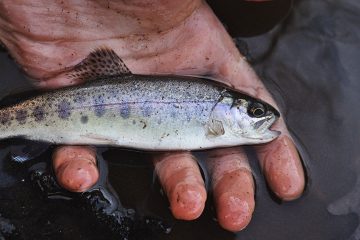Making silage late into the autumn is no longer the exception to the rule, with farmers ignoring the calendar and opting to cut when quality grass is available.
The rules of making late-cut silage are different to crops taken earlier in the season, but they share the key focus of maximising quality and minimising dry matter losses.
Independent silage expert Dave Davies of Silage Solutions says quality silage can be taken late into the year if basic rules are followed.
Below, he lists what to consider:
1. Analyse Grass to Establish Pre-Cutting Nitrogen Requirement
Protein levels can be high due to slower grass growth and the residue of fertiliser that has been applied.
A grass analysis is recommended before applying nitrogen to a crop earmarked for cutting, to establish what level is needed.
Cutting back on nitrogen will mean a lower grass yield, but overfertilising can be a mistake because it will make grass difficult to ensile.
The analysis will indicate the level of nitrogen requirement – seek advice if unsure.
2. Speed of Wilting Will be Slower
Even if the day is warm, the day length is shorter, and this must be accounted for in the cutting height. Set the mower 10cm from the ground.
This will increase airflow and speed up wilting time. Cutting grass at 10cm will also protect aftermaths if there is a frost.
If there is dew, don’t cut until this has lifted – ideally wait until late morning when the grass has had time to dry.
Aim for 30% dry matter and a wilting time of no longer than 24-36 hours, otherwise the speed of sugar losses will be quicker than the speed at which moisture is lost and the result will be poor silage.
3. Clamp vs Bales
Potential spoilage is a major consideration for cutting as clamp silage. You must consider if it is worth opening the clamp and damaging the quality of the ensiled forage for the sake of adding a thin layer of new silage.
Davies says he has seen clamps where farmers have added a foot of late cut, and then found two feet of spoilt silage at feeding out.
If the crop is a small one, say two bales/ha, it is best to make baled silage. If the sheet is to be removed, leave it until the very latest opportunity.
The advantage of bales is that they can be fed strategically as part of the total ration to eke out forage stocks.
If it is clamped and included in the ration in variable amounts it can cause cow performance issues.
4. Cost
Costing late silage on an area basis can make it expensive because yields are lower.
However, many contractors are now moving to different cost structures as multicut systems become more commonplace.
Charging for each load for late cuts is preferable if tedding is not included in the price for each acre.
Baling can make more sense economically though, because you will incur financial losses from opening the clamp.
But the cost of producing silage should not be considered in isolation and the wider benefits must be considered.
For example, taking high grass covers off will improve the quality of spring residuals and first-cut silage in the following year.
Four- or five-week regrowth will maintain residual quality.
5. Nutritional Quality
Crude protein at 15-16% and a metabolisable energy of 11 is perfectly achievable from late-cut silage.
However, these figures are not always useful because late-cut silage can utilise better or worse than an analysis might suggest.
Expect DM to be poorer though – it is unlikely that 30% DM can be achieved, but it will depend on yield and weather conditions on the day.
Fibre digestibility will be good in forage cut later in the year, so take advantage of that by using it strategically in the ration.
One of the things farmers sometimes complain about is that late cut goes straight through the cow, but by mixing it with other cuts you will prevent that.
High-potassium forages should not be fed to dry cows because high potash levels can block magnesium and reduce absorption, which reduces the cow’s ability to mobilise calcium post-calving.
Potassium is more mobile in the autumn, so if you are going to apply fertiliser use nitrogen instead of a blend of nitrogen, phosphorus and potassium.
Source: Farmers Weekly



